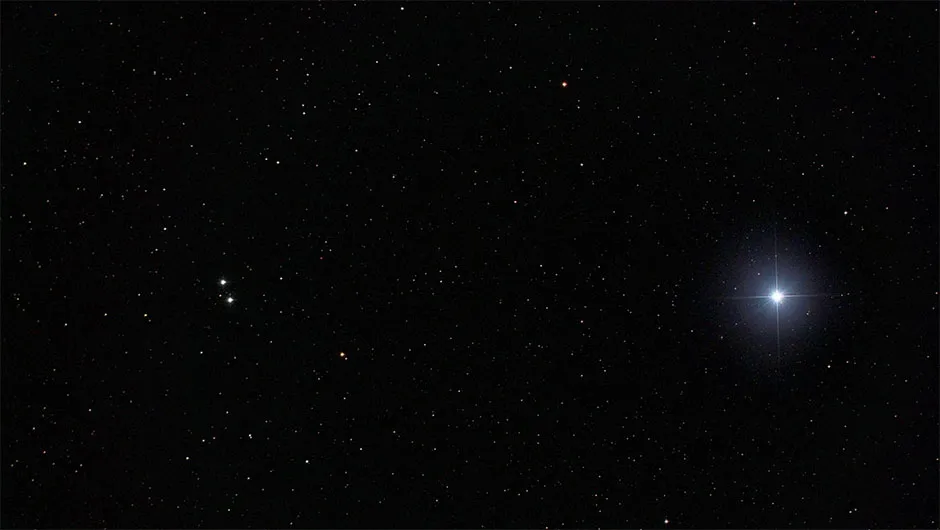Epsilon Lyrae is a wonderful star in the constellation Lyra that's known as the Double Double star because with enough magnification you can easily split it into four: a pair of pairs .
Epsilon Lyrae is quite easy to find once you've located star Vega in the same constellation, as you can star-hop to it from there.
Vega (Alpha (α) Lyrae) forms an equilateral triangle with two multiple star neighbours.
Southeast is binary star Zeta (ζ) Lyrae and northeast is Epsilon (ε) Lyrae.

A concentrated naked eye study of Epsilon should, with good eyesight, split it in two.
With a separation of 208 arcseconds (3.5 arcminutes), the split isn’t actually that hard.
Zeta requires optical help, as there are just 43 arcseconds between the two visible stars of this seven-star system.
Epsilon also has more than two components; a telescope reveals each to be a double again.
A well-collimated 6-inch scope will reveal the twin binary nature of the Epsilon Lyrae system, which unsurprisingly has become known as the Double Double.
Although there are other such systems visible, Epsilon Lyrae is perhaps the most striking because its components are, at first glance, similar in appearance.
The two pairs are separately labelled as Epsilon1 (ε1) and Epsilon2 (ε2) Lyrae, Epsilon1 being to the north.

From the west the four individual stars are:
- Epsilon1 A (mag. +5.1)
- Epsilon1 B (mag. +6.0)
- Epsilon2 C (mag. +5.1)
- Epsilon2 D (mag. +5.4)
The combined light of these stars gives Epsilon Lyrae a compound magnitude of +3.9. The Epsilon1 pair are 2.8 arcseconds apart, the Epsilon2 pair tighter at 2.2 arcseconds.
The Epsilon1 pair orbit one another with a period estimated to be around 1,800 years.
The orbits are highly eccentric, changing the distance between both stars from 73 AU to 400 AU, with an average of 235 AU.
The Epsilon2 pair is separated by a smaller average distance of 145 AU, swinging between extremes of 95 AU to 195 AU.
Their orbital period is also much shorter at 724 years.
This guide originally appeared in the July 2017 issue of BBC Sky at Night Magazine.

